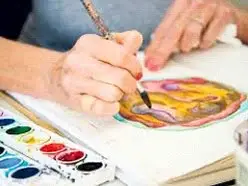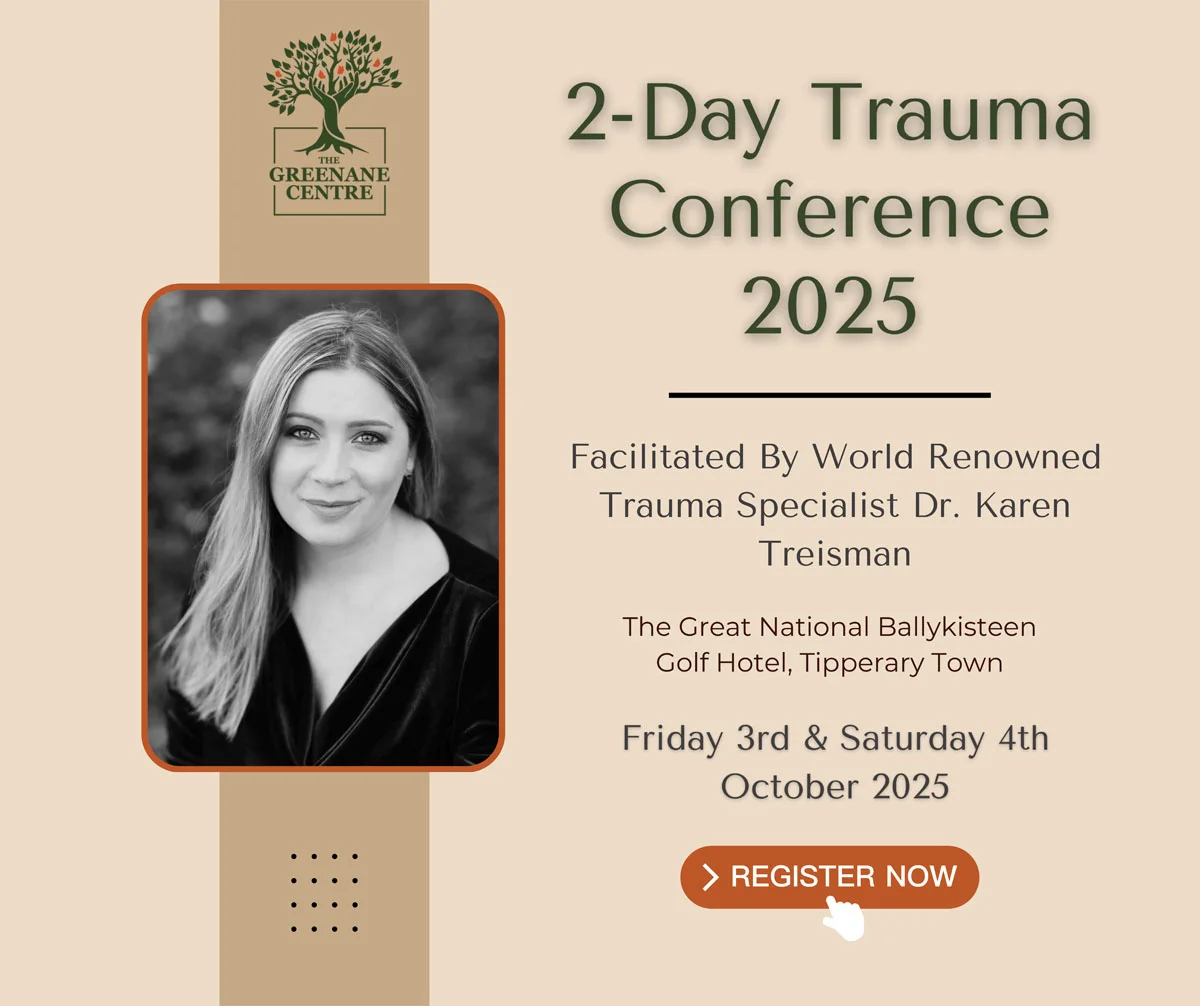“The hands know how to solve a riddle with which the intellect has wrestled in vain.”
C. G. Jung
Traditional psychotherapy, commonly known as talk therapy, is a very effective and highly regarded form of counselling. However, there are instances when clients struggle to find the words to convey their thoughts, feelings and experiences. In such cases, Creative and Expressive Psychotherapy can be incredibly beneficial and empowering for clients.
Through integrating an intermodal, multi-arts approach to counselling and psychotherapy, therapists can support and empower clients to express their felt sense through a multi-sensory and multi-dimensional framework, enabling and supporting clients to give voice to their thoughts, feeling and experiences that may have previously been inaccessible.
Creative and Expressive Psychotherapy is a highly versatile and inclusive approach that can be utilised with individuals across various age groups, including adults, adolescents, and children.
This adaptable framework is increasingly being integrated into counselling courses equipping therapists with the necessary skills to support clients in expressing themselves freely through a range of symbolic mediums such as:
- Art Making
- Music and Poetry
- Dance and Movement
- Psychodrama
- Play Therapy
- Therapeutic Writing
- Sand Tray Therapy
Principles Underpinning Creative and Expressive Psychotherapy
Creative and Expressive Counselling Courses integrate an array of artistic and projective modalities which employ an invitational, non-directive client-focused, bottom up approach. The client is invited rather than instructed within the therapeutic process, the counsellor facilitates the client’s reflections, meaning making and healing through the process of co-regulation and the co-exploration of the clients creative and symbolic expression.
Creative and Expressive modalities are action based therapies in which clients engage in exploring and communicating their thoughts and feelings through active symbolic and/ or projective expressions. This involves participating, creating, and expressing themselves through various forms such as art, music, dance, drama, creative writing, therapeutic play, sand tray or sand play. Through the integration of Creative and Expressive Counselling modalities clients are enabled, facilitated and empowered in developing an awareness of their lived experiences gaining a deeper understanding of themselves while simultaneously fulfilling the human need for self-expression.
Creative and Expressive Counselling modalities have a universal appeal and accessibility, making this therapeutic approach effective for all clients regardless of their gender, ethnicity, ability, age, language or cultural identity.
Some Models of Expressive and Creative Modalities
Sand Tray/ Sand Play
 Sand Tray Stories is a projective, dynamic, symbolic, and sensory model of psychotherapy. Using sand, a sand tray, water and a range of symbols and miniatures clients are invited to create a sand tray story.
Sand Tray Stories is a projective, dynamic, symbolic, and sensory model of psychotherapy. Using sand, a sand tray, water and a range of symbols and miniatures clients are invited to create a sand tray story.
The sand tray scenes the client creates are three-dimensional representations of aspects of the client’s inner world, an unconscious problem can be played out or storied through placing symbols and miniatures in the sand tray, thus the client’s internal conflict is transported from the inner world to the outer world and made visible.
Through making their inner struggle visible through symbolic expression, the client can process and resolve their concerns and struggles and move towards healing through the co-exploration of their sand tray scenes with a qualified therapist.
Play Therapy
Play is essential to the enhancement of children’s emotional, social, cognitive, linguistic and physical development. Play is an integral part of childhood development, serving as a crucial mechanism through which children learn about themselves, others, and the world around them. Play Therapy is based on the principle that play is the child’s first language and toys are their words.
Play therapy is a developmentally appropriate evidence based therapeutic intervention which harnesses the therapeutic powers of play to support children’s emotional and social development. Play Therapy offers a safe and non-threatening environment where children can express themselves, explore their feelings, and work through challenges under the care and safe holding of a qualified play therapist.
Child-centered play therapy provides the relationship which children need to develop coping mechanisms on their own terms, and at their own pace. The therapist creates and maintains a child centred therapeutic play environment that fosters unconditional positive regard and encourages the child to play freely developing a secure and permissive environment that encourages the child’s safe exploration and emotional expression.
Art Therapy/ Therapeutic Art Making
 Art therapy is a therapeutic modality encompassing various forms of creative expression, such as painting, drawing, sculpting, and clay modeling. Art making involves the use of metaphor and symbolism, stimulating symbolic thinking and abstract reasoning. Through combining elements of creative expression with psychotherapy, art therapy provides clients with an avenue for deeper self-exploration, meaning making and insight.
Art therapy is a therapeutic modality encompassing various forms of creative expression, such as painting, drawing, sculpting, and clay modeling. Art making involves the use of metaphor and symbolism, stimulating symbolic thinking and abstract reasoning. Through combining elements of creative expression with psychotherapy, art therapy provides clients with an avenue for deeper self-exploration, meaning making and insight.
Art Therapy offers an alternative form of communication that transcends the limitations of verbal expression. Engaging in therapeutic art making empowers and enables clients to convey emotions, thoughts, and experiences that might be difficult to articulate verbally. The client’s art work is an important and key component of the client’s therapeutic journey, offering a visual representation of the client’s internal world, associated thoughts and feelings offering a non-verbal frame of reference for expressing feelings and experiences.
In addition, clients often experience a sense of emotional catharsis as they externalise and transform their thoughts and feelings into tangible artworks, fostering a sense of release and accomplishment, which supports and bolsters psychological well-being.
Creative and Expressive Counselling Modalities aid in making the Unconscious Conscious and the Suppressed Expressed.
Each of us have had unique experiences that have shaped and impacted our lives in various ways. Our lived experiences impact our thoughts and feelings which in turn impact our behaviours, actions and reactions. Many of our memories, particularly painful ones, can be suppressed residing beneath the surface of one’s conscious awareness commonly referred to in the field of psychology as implicit memories. While explicit memories are conscious and can be verbally expressed and explained, implicit memories are usually non-conscious making them difficult to articulate verbally.
Suppressed memories, thoughts and feelings can cause us to become triggered, manifesting in automatic reactions, actions and unhelpful habits. Making the unconscious conscious and the suppressed expressed is a key component in the therapeutic process, aiding clients in developing a coherent narrative and move towards healing.
Through integrating a Creative and Expressive Counselling framework the therapeutic process can be greatly enriched and enhanced as clients safely uncover, process and integrate subconscious content through symbolic and projective expression under the care and guidance of a qualified and experienced therapist
Creative and Expressive Psychotherapy through a Trauma Informed Lens
Experts in the trauma field, namely Bessel van der Kolk and Peter Levine, have extensively studied the impact of psychological trauma, offering profound and much-welcomed insights into the neuroscience of trauma, advocating for counselling courses to incorporate trauma-informed approaches that address both the psychological and somatic manifestations of trauma through integrating somatic, creative and expressive modalities.
Bessel van der Kolk, in his book The Body Keeps the Score: Brain, Mind, and Body in the Healing of Trauma illustrates how traumatic memories are stored in non-verbal regions of the brain, thus traditional talk therapies might not effectively reach or address these deeply rooted traumatic memories.
Peter Levine, through his work on somatic experiencing, Healing Trauma: A Pioneering Program for Restoring the Wisdom of Your Body highlights how trauma can manifest as bodily sensations and physiological responses that talk therapy alone cannot directly access and address. Psychological trauma is stored in implicit memory, the body’s non-verbal memory systems, thus a bottom up approach to trauma work is warranted.
A bottom-up approach to trauma therapy focuses on the importance of regulating a clients nervous system and visceral responses restoring a sense of safety before engaging in cognitive processing. When clients feel safe and grounded in their bodies, they are better equipped to engage in cognitive processing aiding in the development of a coherent narrative around their trauma experience.
Developing a coherent narrative is an important aspect of processing trauma, as it helps clients integrate their experiences in a way that makes sense to them, reduces somatic activation and fosters healing. However, for this integration to occur effectively and without causing further dysregulation, clients first need to feel secure within themselves physiologically and psychology.
Unlike top-down approaches, which primarily involve focusing on cognitive processing and verbal expression, Creative and Expressive Psychotherapy leverages creative and non-verbal modalities to access and process trauma held in the body’s implicit memory systems safely. Through engaging in Creative and Expressive therapeutic approaches clients can explore and express their trauma safely through first regulating their nervous system.
Benefits of Creative and Expressive Counselling Modalities
- Creative and Expressive Psychotherapy transcends language through focusing on symbolic and non-verbal modes of expression. This makes this multimodal and integrative approach accessible and empowering particularly for clients who find it challenging to verbally express their thoughts, feelings and experiences.
- The flexibility and adaptability of Creative and Expressive Counselling modalities enable therapists to tailor their therapeutic approach to meet the unique needs of their clients. This inclusive and integrative approach can foster a sense of safety and acceptance, encouraging clients to engage more deeply in their therapeutic process.
- Creative and Expressive Counselling Modalities are particularly beneficial in bringing unconscious, suppressed and repressed thoughts and feelings to the surface in a safe manner through symbolic and projective expression.
- The active participation inherent in Creative and Expressive Counselling modalities not only engages clients in their therapeutic journey but also encourages clients to take an active role in their healing process. The therapist supports this by creating a client-centred and supportive environment, where clients feel welcomed and empowered to express themselves freely.
- Creative and Expressive Counselling Modalities encompass mind and body integration, which is particularly beneficial for clients who have experienced trauma. Trauma is held within the body and mind, often as fragmented or sensory memories. Creative and Expressive Psychotherapy facilitates clients in accessing and expressing these sensory experiences in a safe and contained manner, providing a pathway to the development and integration of a coherent narrative.
- Engaging in Creative and Expressive therapeutic modalities stimulates neuroplasticity, the brain’s ability to reorganise and form new neural connections. As clients engage in Creative and Expressive therapeutic modalities the brain is facilitated in developing new neural pathways, enabling adaptive changes in emotional and cognitive processing. These rewired neural connections can lead to improved emotional regulation, increased resilience, and enhanced coping skills.
- Creative and Expressive therapeutic modalities enhance and develop a clients sense of agency and self efficacy. Through creative expression clients begin to gain a sense of control and accomplishment. Creative expression empowers clients to see themselves as capable of effecting change and expressing their inner experiences.
Trauma Informed Creative and Expressive Psychotherapy is a multimodal therapeutic approach that effectively addresses the complex neurobiological and developmental impact of trauma. By focusing on the sensory and embodied aspects of traumatic memories, this approach helps clients integrate their experiences and aid in the development of coherent narrative.
Unlike traditional talk therapies, this form of psychotherapy incorporates and integrates creative, expressive, and projective techniques, such as art therapy, play therapy, sand tray, sand play therapy, music, movement, and somatic practices. The emphasis on creativity and expression not only aids in processing traumatic memories but also fosters a sense of empowerment and self-discovery.
This multimodal holistic approach enables clients to reconnect with their bodies, manage stress, and develop healthy coping mechanisms. Ultimately, Trauma Informed Creative and Expressive Psychotherapy supports the journey towards healing by promoting emotional resilience through the integration of traumatic experiences through a bottom up approach. This sense of safety and embodied presence facilitates clients in reconstructing and developing a coherent narrative around their experiences.
Creative and Expressive Psychotherapy enables clients to reframe past experiences, gain new perspectives, and ultimately integrate these experiences into their life story in a more cohesive and meaningful way leading to post traumatic growth.
Recommended Reading: Creative Counselling: Creative Tools and Interventions to Nurture Therapeutic Relationships by Tanja Sharpe
Deepen Your Understanding of Creative and Expressive Psychotherapy by undertaking one of our Specialised Counselling Courses
Creative and Expressive Counselling Courses are underpinned by evidence based and ethical practices thus therapists are ethically obliged to undertake additional training in these modalities in order to ensure they are offering safe, ethical and effective interventions.
All our counselling courses at The Greenane Centre incorporate creative and expressive trauma informed modalities. We deliver counselling courses live online, in person and through a blended learning format. Learn more about our counselling courses by contacting us today.



